During the Second World War, many in Hollywood signed up to serve their country in the Office of Strategic Services (OSS)—America’s first intelligence agency—including prolific Oscar-winning filmmaker John Ford and legendary Disney camera effects artist Bob Broughton. Together, they created OSS training films and documented OSS activities in the field, pioneering the use of film in intelligence for generations to come.
At that time, however, Hollywood studios were prohibited from mentioning OSS in films due to secrecy. Screenwriters did their best to keep those three little letters out of wartime scripts.
On September 2, 1945, the Empire of Japan surrendered, ending World War II. That same month, President Harry Truman, skeptical that the OSS was needed in the postwar government, signed Executive Order 9621, which disbanded the organization.
Still, General William Donovan, who led the OSS, would strive for the OSS legacy to persist after the war. He wanted the public to know and remember the heroics of the men and women of OSS. Donovan encouraged former OSS officers to write articles and memoirs sharing the greatness of the organization’s missions.
Many ex-OSS officers with a talent for writing headed straight to Hollywood.
First Out of The Gate: O.S.S. Starring Alan Ladd
Actor, playwright, and screenwriter Richard Maibaum began his writing career on the New York stage, but he quickly moved to Hollywood after his play Sweet Mystery of Life was sold to Warner Brothers and became the hit smash Gold Diggers of 1937. He wrote several hit comedies for Warner Brothers and MGM studios during the late 1930s and early 40s, but when America went to war, he joined the U.S. Army. In 1942, he was assigned to the Signal Corps to work on morale-building films and war documentaries.
As soon as Maibaum’s wartime service ended, he returned to Hollywood and immediately pitched a story idea to the head of Paramount pictures. “Every studio in Hollywood was racing to come out with the first OSS film,” Maibaum recalled in his book, Speaking of Writing. “When I was in Washington, I knew some of the OSS people, so I had a head start on the subject.”
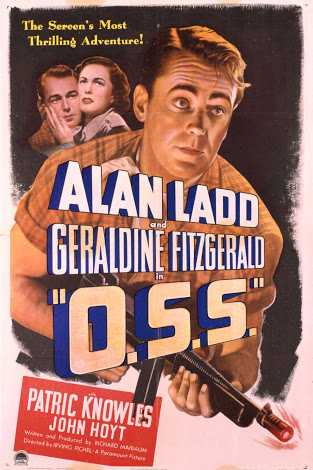
Ready to fight! Alan Ladd featured in the “O.S.S.” movie poster. 1946.
O.S.S., starring Alan Ladd, is the story of John Martin, who is arrested at the beginning of the film for attempted industrial espionage. Based on his knack for breaking and entering, Martin is able to avoid jail time and is instead turned over to the newly-created OSS for training. Later, Martin is sent to France for his first assignment.
Maibaum, who wrote and produced O.S.S., wanted Paramount to cast real-life OSS officer and Hollywood heartthrob Sterling Hayden as the lead. Hayden, however, was still serving in uniform at the time, so the role went to Ladd. O.S.S. was released in theaters May 26, 1946, and the film was so successful that other studios were quick to jump on the OSS bandwagon. Three years later, Maibaum and Ladd worked together on another OSS fictional project, a dark film noir of revenge, Captain Carey, USA.
A Real-Life OSS Officer Lends His Advice to Cloak and Dagger
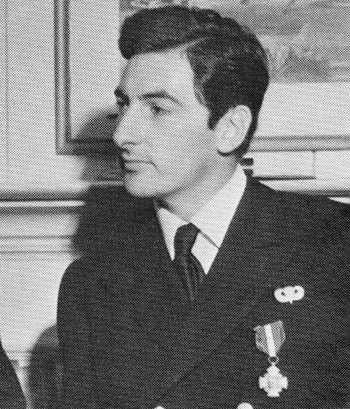
E. Michael Burke: 1940s. From football star, to sailor, spy, circus and sports manager. Truly a Renaissance Man.
Before joining the OSS, Edmund Michael “Mike” Burke, a former University of Pennsylvania football star, had a chance meeting with General Donovan at a dinner party in Washington, and Donovan remembered the halfback. “Anybody who can run back punts the way you can ought to be able to wiggle behind enemy lines,” Donovan remarked.
Burke joined the OSS, serving with distinction in Italy and France, and was awarded the Navy Cross, Silver Star, and the French Medaille de la Resistance. As the war ended, Burke decided to try his luck in Hollywood.
In 1946, film director Fritz Lang was looking for a real-life OSS officer to serve as a technical advisor for his espionage movie, Cloak and Dagger. The story was drawn from a recent non-fiction book, Cloak and Dagger: The Secret Story of O.S.S., written by former OSS members Corey Ford and Alastair MacBain.
That’s when a tall, dark-haired man, who recently returned from overseas service with the OSS, knocked on Lang’s office door. It was Mike Burke. Burke worked with Lang on Cloak and Dagger. The film starred Gary Cooper as nuclear physicist Alvah Jesper (think Oppenheimer), who is recruited by the OSS to fly to Switzerland to contact a Hungarian nuclear physicist working on the first nuclear bomb.
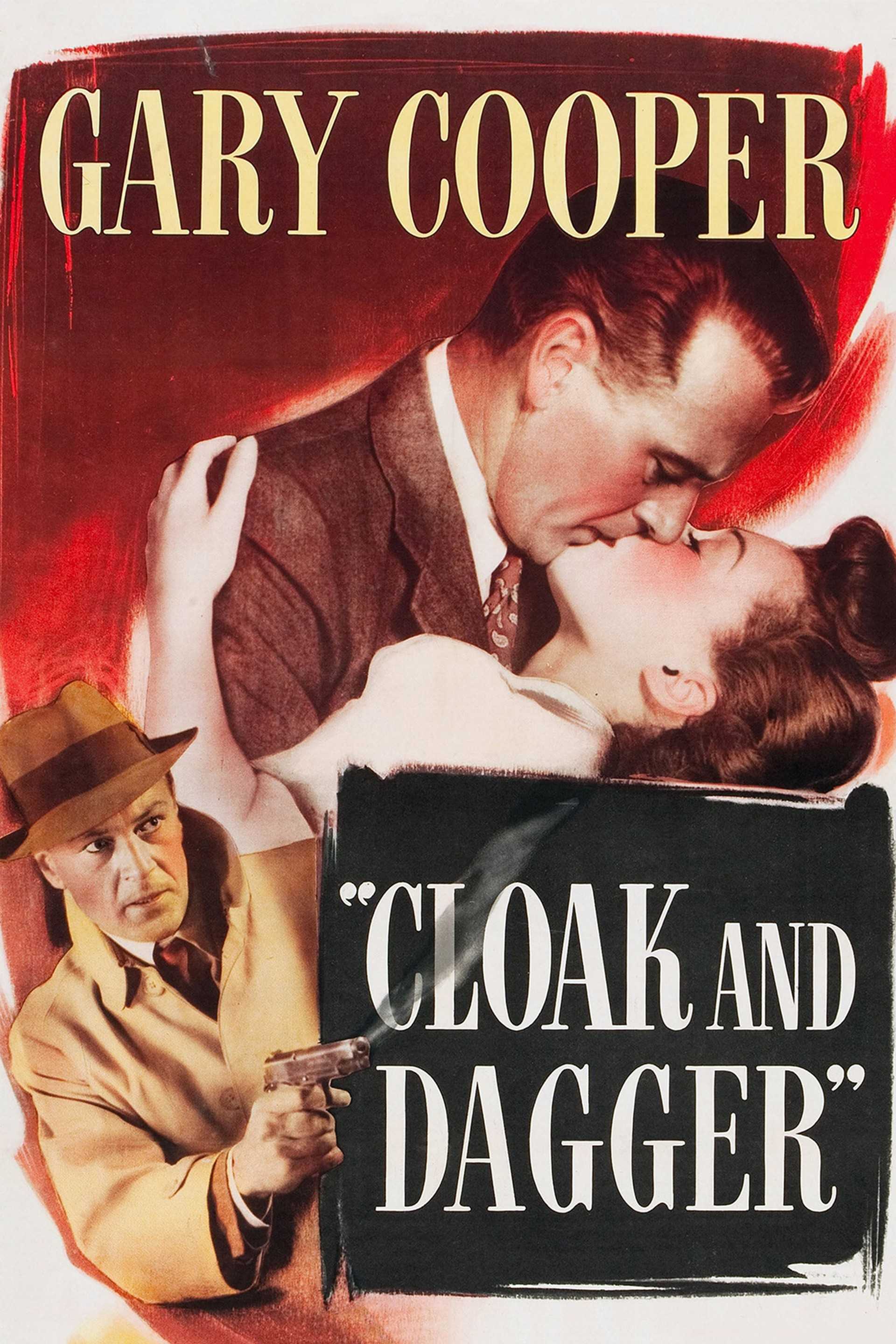
Movie poster for “Cloak and Dagger” in which Gary Cooper battles Axis spies. Directed by Fritz Lang. 1946.
Cloak and Dagger was released in theaters in September 1946 and garnered mixed reviews. It ended up being the only film Burke was involved with. He left Hollywood and returned to intelligence work, joining the newly-established CIA in 1951—for a few years.
Burke eventually left intelligence work behind and ran away to join the circus! In 1953, he became the manager of Ringling Brothers-Barnum & Bailey Circus. However, his most well-known stint is probably when he served as president of the New York Yankees from 1966 to 1973.
OSS Becomes 077 in 13 Rue Madeleine
By the early 1930s, Sidney “Sy” Bartlett had already made a name for himself as a budding screenwriter when Hollywood switched from silent to talking pictures. He had 16 of his scripts produced before he joined the U.S. Army in 1942. His military career drew him into OSS circles.
At the end of World War II, Bartlett returned to Hollywood and became a full-time screenwriter with 20th Century Fox studios. With the OSS and the war fresh in his mind, he began writing a spy thriller that would eventually become 13 Rue Madeleine.
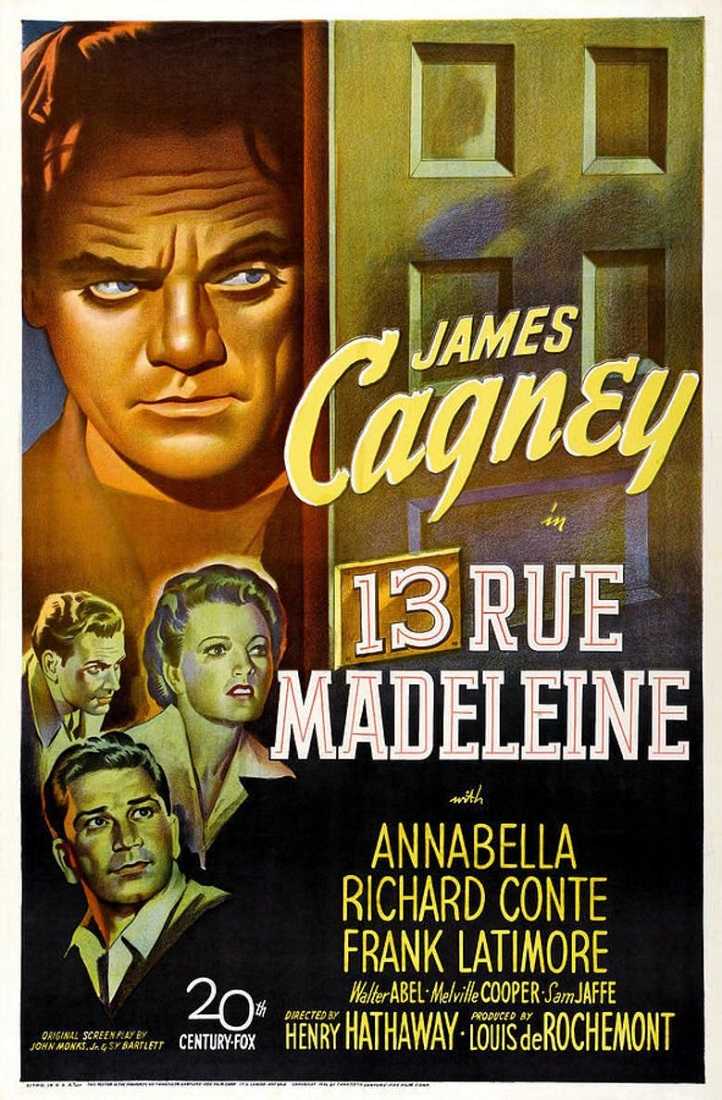
Poster from film “13 Rue Madeleine,” 1947.
The movie was originally envisioned as a love letter to the OSS with James Cagney playing a character based on General Donovan. However, Donovan read a first draft of the script and immediately raised major objections to the film, with one plot point depicting his agency infiltrated by an enemy spy. The script went through many revisions, including a name change from O.S.S. to “077.” Cagney’s eventual character was a spy instructor, and all similarities to Donovan were dropped.
Released in 1947 the film did quite well. Though it bears little resemblance to actual OSS work, it is the first to show a fictionalized version of OSS training and tradecraft. One of the technical advisors on the film was real-life OSS hero Peter Ortiz.
Peter Ortiz—the most highly-decorated OSS officer—and Operation Secret
Peter Julien Ortiz's military career started at the age 19 with the French Foreign Legion. By the start of World War II, Ortiz enlisted in the U.S. Marine Corps. OSS recruited Ortiz based on his formal military training and experience fighting in North Africa. Ortiz led successful missions in North Africa and France and became the most highly-decorated OSS officer—with the U.S., Britain, and France awarding him 24 medals.
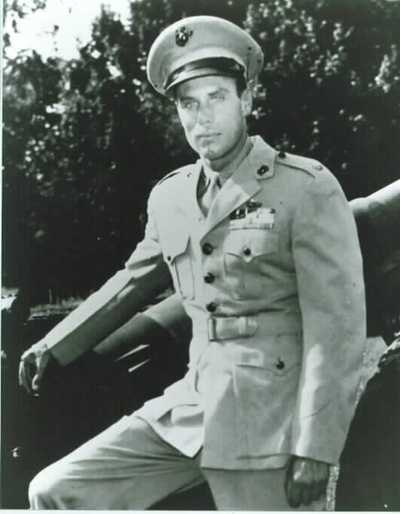
Handsome Peter Ortiz. Lucky in war. Unlucky in Hollywood. 1940s.
Through the OSS, Ortiz would meet film director John Ford. Ford believed Ortiz’s good looks set him up to become an actor. When Ortiz was discharged from active duty in 1946, he followed Ford to Hollywood and appeared in small roles in many of Ford’s postwar films. Ford also believed Ortiz’s war experiences could be made into a major motion picture.
It wasn’t until 1952 that a major studio thought Ortiz’s war exploits would make a great film. Ortiz met with studio executives at Warner Brothers and believed he would be the best person to play, well, himself in the film. However, executives kept Ortiz out of meetings with the screenwriters and film director. Much to his disappointment, executives informed Ortiz just before filming that Cornel Wilde was cast to portray a fictionized version of him.
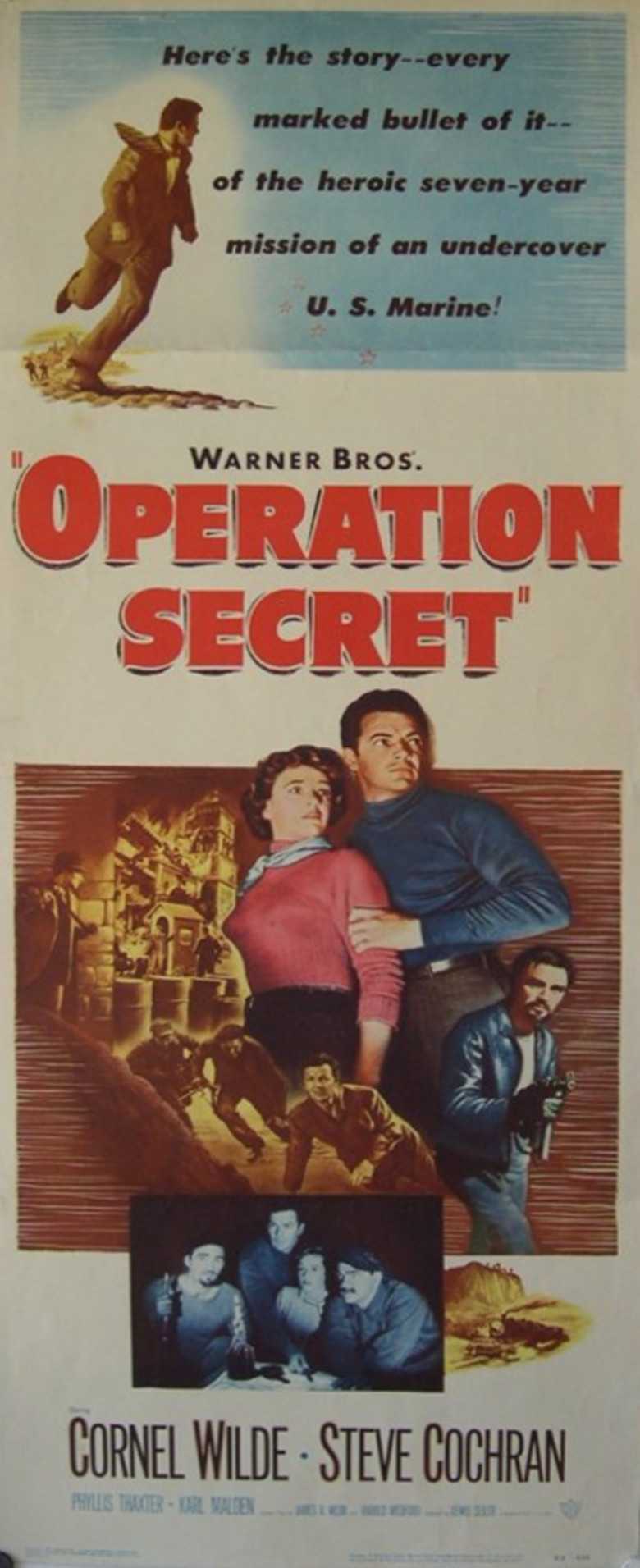
Operation Secret. Ortiz’s wartime story makes it to the silver screen. 1952.
Operation Secret premiered in 1952 with little fanfare and was quickly forgotten. Ortiz continued pursuing a Hollywood career for a few more years but failed to land any roles that would make him a breakout star. He finally gave up on the Hollywood dream in 1955 and retired to Tarzana, California.
John Ford – Academy Award Winning Director
American film director John Ford is known for his iconic landscapes and breathtaking shots of man vs. wild that defined the image of the American west in popular culture. During the beginning of his Hollywood career, Ford worked with many well-known cowboy stars such as Harry Carey, Hoot Gibson, and John Wayne. Out of Ford’s 145 films, Wayne appears in 24 of them.
During World War II, however, Ford used his talents as a director to aid the OSS.
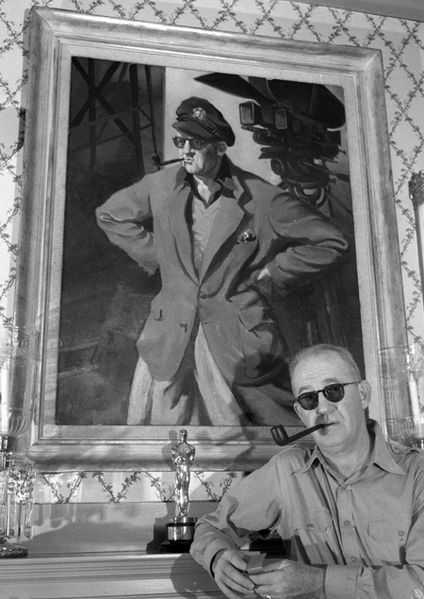
John Ford, director of war movies for OSS and Hollywood. 1946.
In 1934, Ford was commissioned as a lieutenant commander in the U.S. Naval Reserve and six years later, in 1940, he began gathering a reserve unit of experienced Hollywood filmmakers. The unit eventually transferred into the OSS and became the OSS Field Photographic Branch.
Ford’s initial job was to produce documentary films. His first few documentaries focused on the defense preparations in Panama and Iceland, the first Atlantic convoys to Europe, and an historical account of the Pearl Harbor attack.
The unit’s charter was later expanded; they created OSS training films and documented OSS activities in the field. Some of the activities documented included OSS Detachment 101, the paramilitary unit that operated behind Japanese lines in Burma and China, and the Allied landing in Normandy on June 6, 1944: D-Day.
After the war ended, Ford returned to Hollywood. He developed a distinctive style and a reputation as a brilliant storyteller.
Ford holds the record for most Academy Award wins of any director in history: six. Ford won his first Academy Award for best director in 1935 for his film The Informer. He went on to win three more best director Academy Awards for his films The Grapes of Wrath (1940), How Green Was My Valley (1941), and The Quiet Man (1952). He also won two more Academy Awards for documentaries he produced during World War II: The Battle of Midway (1942) and December 7 (1943).

John Ford on a Hollywood set with fellow OSS officer and actor, Peter Ortiz. Late 1940s or early 1950s.
Although the only OSS-specific film Ford directed was the OSS training film How to Operate Behind Enemy Lines (1943), Ford’s contributions to the war effort using his incredible talent as a director and filmmaker demonstrate how anyone can aid in the security of a nation.
